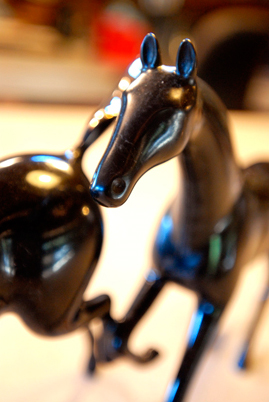A brief explanation of the lost wax process continued...
Masking: Before patination the areas designated by the artist not to be coloured are masked and later polished to a high bronze sheen

Patination: The chased bronze is now treated with chemicals and heat to give it the chosen colour. The patina is now a permanent part of the sculpture. The process is proprietary, but involves undercoats, varied chemical sequences, different temperature ranges and multiple processes. After the colour is applied, hot wax is used to seal the metal's pores. Then the sculpture is buffed brightly where required and re-rubbed and re-waxed three times by hand. The sculpture must be handled with care to avoid damaging these patinas.

Signing and numbering: limited edition sculptures are signed and numbered using an engraver.

Back
Masking: Before patination the areas designated by the artist not to be coloured are masked and later polished to a high bronze sheen
Patination: The chased bronze is now treated with chemicals and heat to give it the chosen colour. The patina is now a permanent part of the sculpture. The process is proprietary, but involves undercoats, varied chemical sequences, different temperature ranges and multiple processes. After the colour is applied, hot wax is used to seal the metal's pores. Then the sculpture is buffed brightly where required and re-rubbed and re-waxed three times by hand. The sculpture must be handled with care to avoid damaging these patinas.
Signing and numbering: limited edition sculptures are signed and numbered using an engraver.
Back
Photograph by Gina Taro

